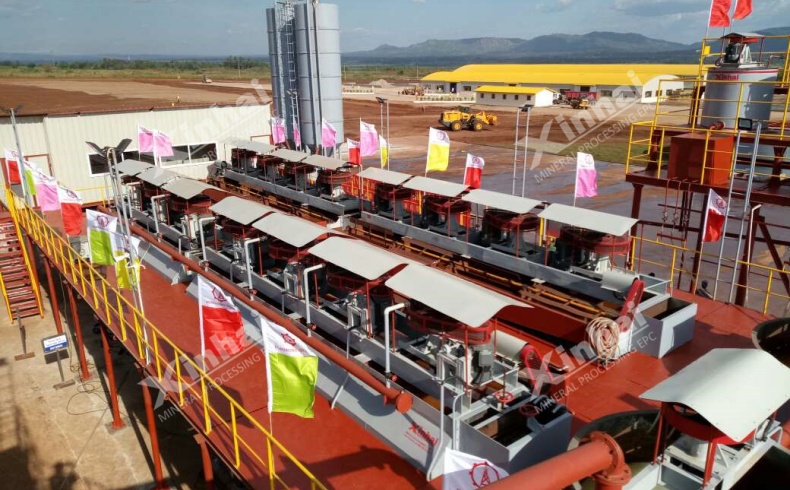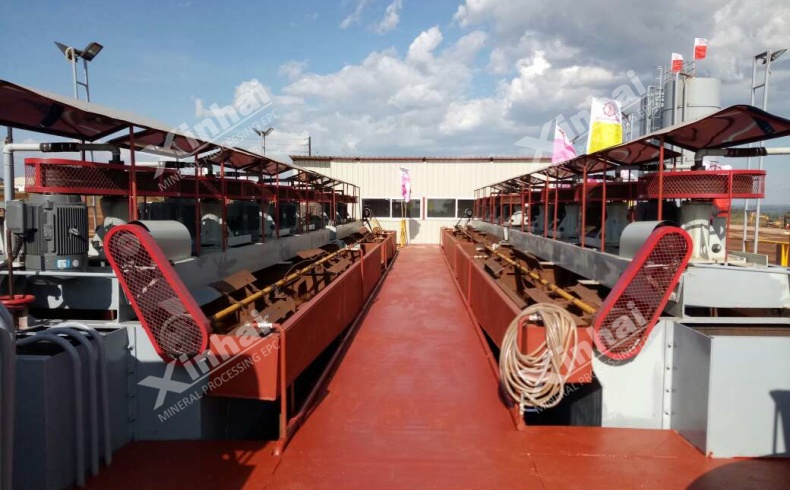If you want to know more information (such as product/process price, etc.), please contact us 24-hour telephone
Phosphate flotation is a cornerstone technology in modern mining, enabling the efficient separation of valuable phosphate minerals from ore matrices. As global demand for phosphate-based fertilizers and industrial chemicals surges, optimizing this process has become critical for sustainable resource utilization. At XinhaiMining, we specialize in delivering cutting-edge phosphate processing solutions tailored to diverse ore types, ensuring high recovery rates and operational excellence. This article explores the intricacies of phosphate flotation, its methodologies, and how our EPCM+O services elevate outcomes for clients worldwide.

Phosphate flotation leverages differences in mineral surface properties to separate target phosphate particles from gangue. By adjusting slurry chemistry and hydrodynamic conditions, hydrophobic phosphate minerals attach to air bubbles, rising to form a froth layer for collection. Below, we break down the process into five key stages.
1. Ore Preparation
Crushing: Raw phosphate ore is crushed to 10–25 mm particles, increasing surface area for subsequent grinding.
Grinding: Ball or rod mills reduce ore to 75–150 microns, achieving mineral liberation for efficient separation.
2. Slurry Conditioning
Pulp Preparation: Water is added to create a slurry (20–30% solids concentration).
Reagent Addition:
Collectors (fatty acids or sulfonic acids) enhance phosphate hydrophobicity.
Frothers (pine oil or MIBC) stabilize bubble formation.
Modifiers (sodium silicate, sulfuric acid) adjust pH (typically 8–10) and suppress gangue.
3. Bubble Generation
Mechanical or pneumatic flotation cells aerate the slurry, producing 0.8–1.2 mm bubbles. Optimal aeration ensures selective mineral attachment.
4. Froth Separation
Hydrophobic phosphate particles rise with bubbles, forming a froth layer skimmed by paddles. Tailings (silica, carbonates) sink and are discarded or reprocessed.
5. Concentrate Dewatering
Filter presses or centrifuges reduce moisture to <10%, yielding market-ready phosphate concentrate (28–34% P₂O₅).

Tailoring strategies to ore composition is vital. XinhaiMining’s expertise covers:
1. Direct Flotation
Best for siliceous phosphate ores: Silica gangue is depressed using starch, while apatite is floated.
2. Reverse Flotation
For calcareous ores: Carbonates (e.g., dolomite) are floated with amine collectors, leaving phosphate-rich underflow.
3. Double Reverse Flotation
For low-grade ores: Two-stage impurity removal boosts P₂O₅ grade by 8–12%.
4. Crago Process
A dual-step approach: direct flotation for coarse particles, reverse flotation for fines.
1. Ore Characteristics
Particle size, mineralogy (e.g., apatite vs. collophane), and impurity types (clay, organics).
2. Reagent Optimization
Collector-frother synergy: Overdosing increases costs; underdosing reduces recovery.
3. Process Parameters
Slurry density, aeration rate (6–8 m³/h per m²), and retention time (5–15 min).
4. Equipment Selection
Column vs. mechanical cells: Columns offer higher selectivity for fine particles.
XinhaiMining's proprietary modeling software simulates 200+ variables to design bespoke flowsheets, improving recovery by 15–25% versus conventional methods.
Case Study: XinhaiMining's EPCM+O Success
A Moroccan client faced low recoveries (68%) due to complex carbonate-apatite ore. Our solution:
Modified Crago Process with staged pH control.
Custom reagent blend (soap collector + lignin sulfonate depressant).
Result: Recovery surged to 89%, with CAPEX reduced by 18% via modular plant design.
Conclusion
Mastering phosphate flotation requires deep technical expertise and adaptive innovation. At XinhaiMining, we combine state-of-the-art R&D with decades of field experience to deliver turnkey solutions—from ore testing to operational optimization. Whether you’re tackling refractory phosphates mining or scaling production, our EPCM+O framework ensures cost-effective, sustainable outcomes.
Contact XinhaiMining today to revolutionize your phosphate processing operations.